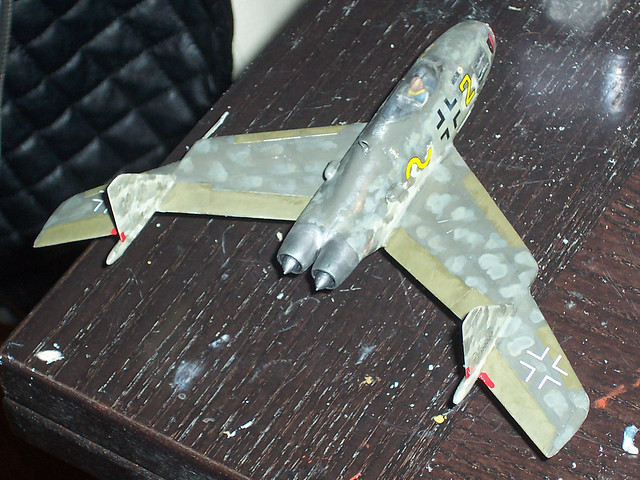Etwas für die Luft ' 46-Freunde: ein (fiktives) Blohm & Voss Design:



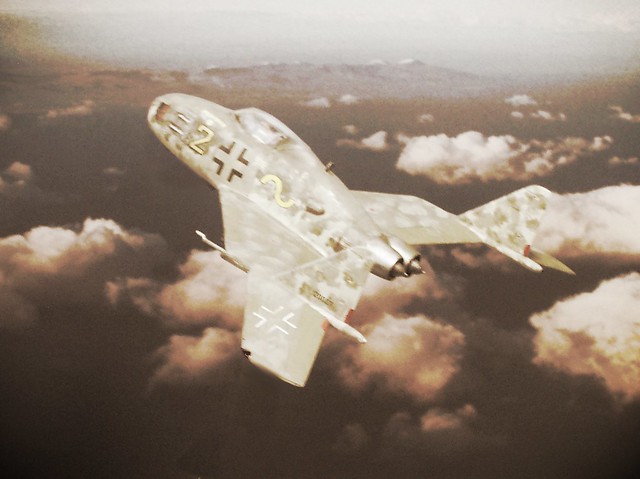
Some background:The Bv 316 was a tailless twin jet fighter designed by Blohm & Voss as a replacement for the Me 262 fighter. The design of the Bv P.216 was begun in the summer of 1943 and was intended as an overall improvement to the Messerschmitt Me 262. The biggest weakness of the Me 262 were its unreliable and weak Junkers Jumo 004 B-1 turbojets, delivering only 8.8 kN (1,980 lbf) each.
Whilst the Luftwaffe took the Me 262 into service, an improvement was direly needed. Messerschmitt responded with the P.1099 design, and in 1944 the High Command of the Luftwaffe came up with the Emergency Fighter (Volksjäger) Competition, which challenged engineers to invent a new, light and simple aircraft.
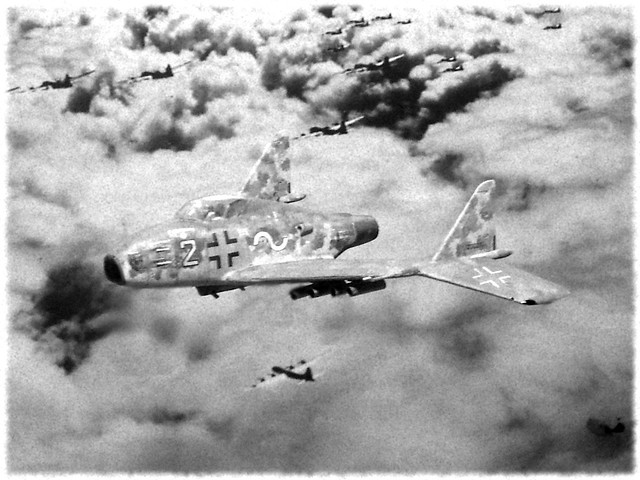
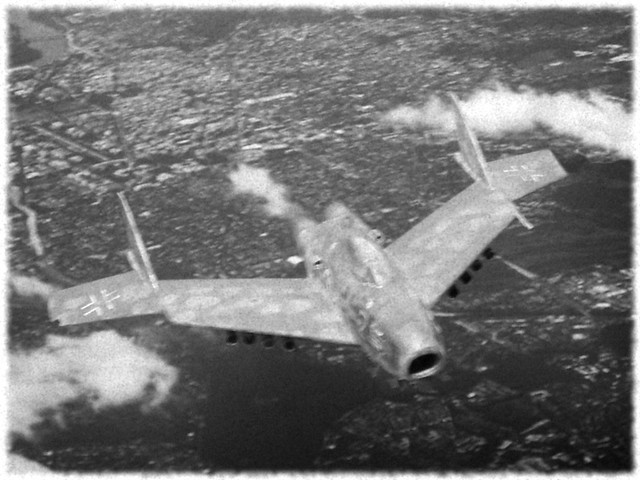
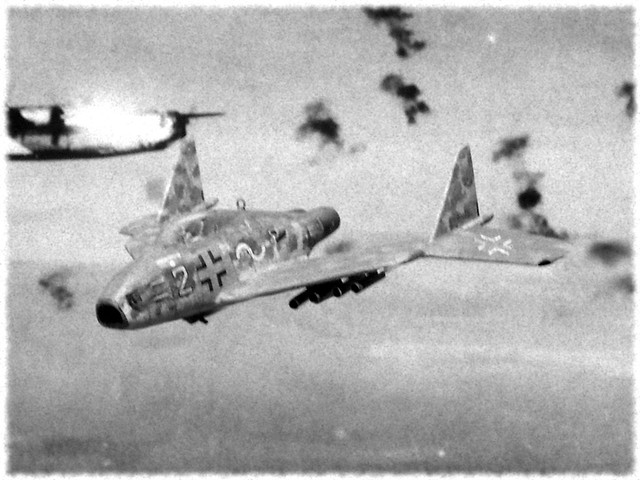
Nevertheless, heavier types with longer endurance were needed, too, so Blohm & Voss’ designer Dr. Vogt proposed a twin jet development of his versatile family of tailless fighter concepts (ranging from pusher propeller designs through a light fighter for the Volksjäger competition up to a heavy, three-seated night fighter design) that would fall into the Me 262’s weight class, but take advantage of the Heinkel HeS 011, a new jet engine which was being under development for aircraft of various classes and sizes and offered 150% of thrust.



The engines were mounted in a pair at the rear of a short, tailless fuselage, breathing through a bifurcated nose intake. The pilot sat above the air intake in a pressurized cockpit, with a dorsal fuel tank behind him. More fuel was carried in the wings, which were swept 40° at quarter chord and featured fins on short outriggers at about 2/3 of the wing span. A fully retractable tricycle landing gear was fitted, the front wheel turned 90° to lie flat under the air intake while the main wheels retracted inward and also lay under the engine bay. Armament consisted of four compact MK 108 30mm cannons in the nose section.
This aircraft received the internal project number P.216. Since it already incorporated advanced wind tunnel research for the innovative layout and the swept wing design, Dr. Vogt received an official Go from the RLM.
Construction of three P.216 prototypes began in May 1945, followed by extensive flight and structural tests. The first aircraft (A-0 pre-production series) made its first flight in August 1945, and after a minimal test program, the P.216 was cleared for production in October 1945, receiving the official RLM service code number 316.



The production aircraft (Bv 316 A-1) differed only marginally from the prototypes, since there was hardly any time for refinement. Most visible changes included a simplified canopy (instead of a more rounded bubble canopy), and external hardpoints under fuselage and wings for a wide range of ordnance, which made the Bv 316 eligible for fighter bomber duties, too. A plumbed central pylon also allowed the carriage of a drop tank, which extended range appreciably. Less obvious was better armor protection for the pilot and the fuselage tank. Overall performance was slightly better than the Me 262’s, the most significant advantage was the dramatically improved reliability of the HeS 011 engines and a much better turn radius due to the lower wing load.
Luftwaffe pilots were sceptical at first, but found the Bv 316 to be a trustworthy weapon platform. The first machines were allocated to bases in southern Germany and Austria, where the fighters helped to protect oil fields in Bulgaria in mid 1946.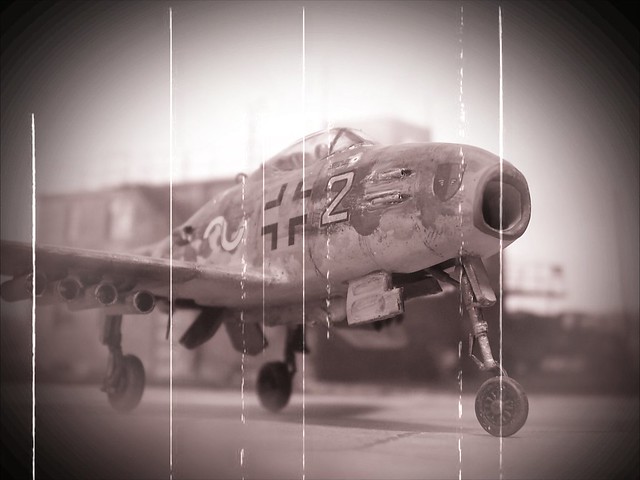

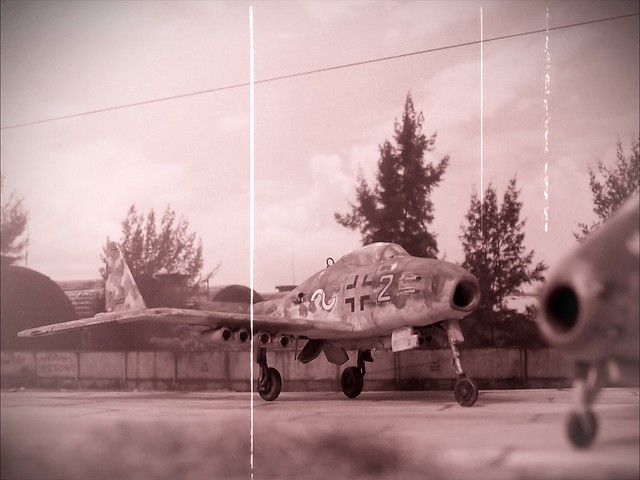
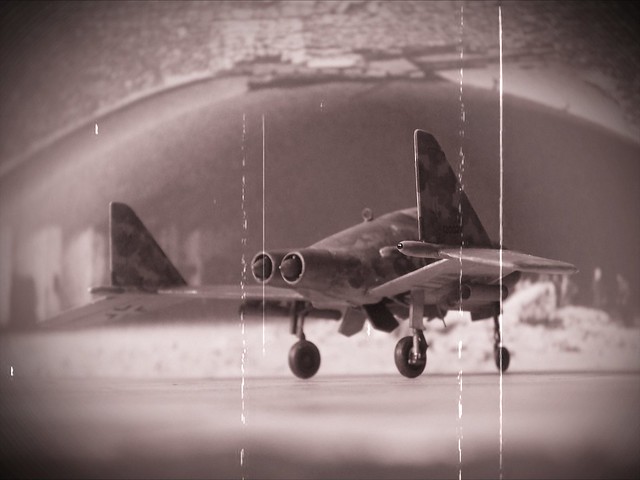
General characteristics: Crew: One
Length: 8,17 m (26 ft 9 1/4 in)
Wingspan: 11,40 m (37 ft 4 1/2 in)
Height: 3,49 m (11 ft 5 1/4 in)
Wing area: 29,11 m² (313,4 sq ft)
Empty weight: 5.046 kg (11,125 lb)
Loaded weight: 6.894 kg (15.198 lb)
Max. takeoff weight: 18.152 lb (8.234 kg)
Powerplant: 2× Heinkel HeS 011A turbojets, each rated at 12,01 kN (1.300 kg/2.866 lb)
Performance: Maximum speed: 1.006 km/h (625 mph, 548 knots)
Stall speed: 200 km/h (124 mph, 108 knots)
Range: 2.400 km (1,522 mi)
Service ceiling: 15.100 m (49.600 ft) at combat weight
Rate of climb: 45,72 m/s (9.000 ft/min) at sea level
Wing loading: 236.7 kg/m² (49.4 lb/ft²)
lift-to-drag: 15.1
Thrust/weight: 0,42
Armament: 4× fixed 30mm MK 108 cannons in the nose
Underfuselage and wing hardpoints for a total ordnance of 1.500 kg (3.303 lb),
including bombs of up to 1.000 kg (2.202 lb) caliber, drop tanks or unguided rockets
Sieht verdammt plausibel aus - und ist eigentlich eine grob umgebaute F-86A von Matchbox, mit wenigen Spenderteilen! Angelehnt ist das Layout an die zahlreichen echten B&V-Designs aus der P.208 bis 215-Reihe, etwas in der Größenordnung der Me 262 gab es aber nicht. Also flugs die P.216 erfunden, und die Sabre bot sich als Basis (wo immer die Amerikaner die Idee zu deren Design her hatten...

) an.
Grundsätzlich wurde an der F-86 viel gesägt und weggelassen, und einiges verändert:
* Seitenleitwerke sind Höhenruder einer Italeri A-4M Skyhawk
* Die Blasenhaube ist durch Klarteil und Rumpfsektion einer Revell Me 262 ersetzt (für einen Retro-Look)
* Bevölkert mit einem Airfix-Piloten
* Die Treibwerke stammen von einem 1:48 Dougramen-Luftkissenfahrzeug (Anime)
* Fahrwerksbeine einer Hobby Boss Me 262, die Bv 316 sollte höher stehen
* Haupträder einer Italeri IAI Kfir
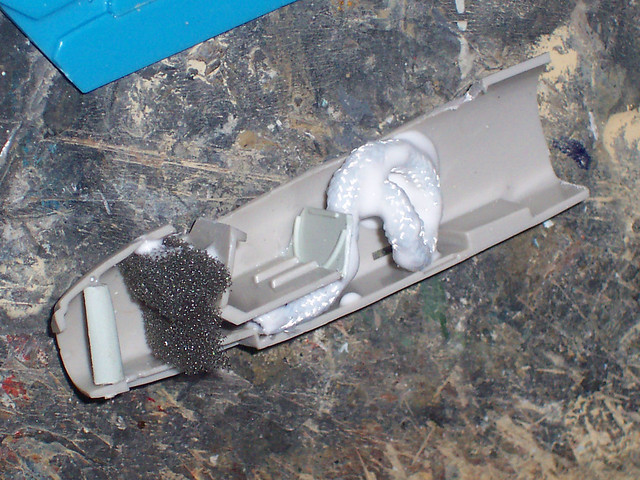
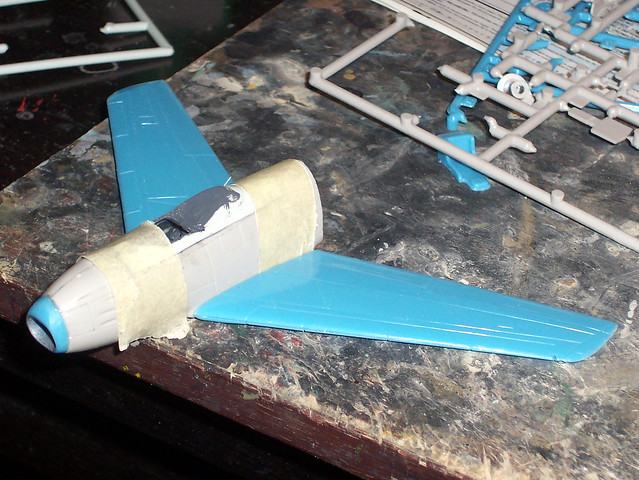

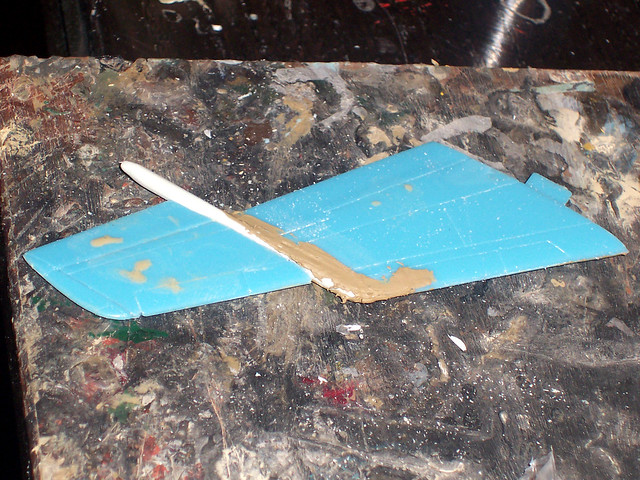
Innen kam noch ein Splitter im Lufeinlauf hinzu, unter den Tragflächen sind acht WGr21-Rohre installiert und unter dem Rumpf ein Bombenschloß einer Fw 190. Am Lufteinlauf verschwand außerdem die Lippe mit dem Radar-Entferungsmesser, die Original-MG-Öffnungen sind verschlossen und statt dessen vier Kanülen-Kanonen installiert - leider etwas unsauber.


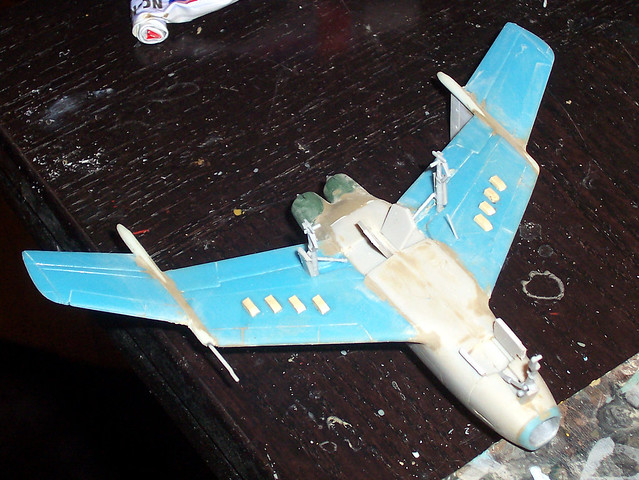
Der Anstrich ist bewusst seltsam bis hässlich gewählt - von oben uni RLM81 mit Flecken in RLM 02, von unten ein grünliches Grau, das inoffiziell mit RLM 84 umschrieben wird, das aber wohl eine Notlösung war, weil es nix anderes gab. Sieht jedenfalls fies aus - bei mir eine Mischung aus RAF Sky und etwas RLM 02. Um das Ganze aufzulockern sind die Vorflügel und Steuerflächen von oben in einem helleren Grün (Humbrol 155) gehalten, von unten sind sie RLM 76: als ob sie kürzlich repariert worden wären, oder in der Endmontage aus verschiedenen Quellen stammen. Die Markierungen sind munter zusammengepuzzelt und ebenfalls recht simpel gehalten. Alle Innenflächen sind RLM 66 (Dunkelgrau).

